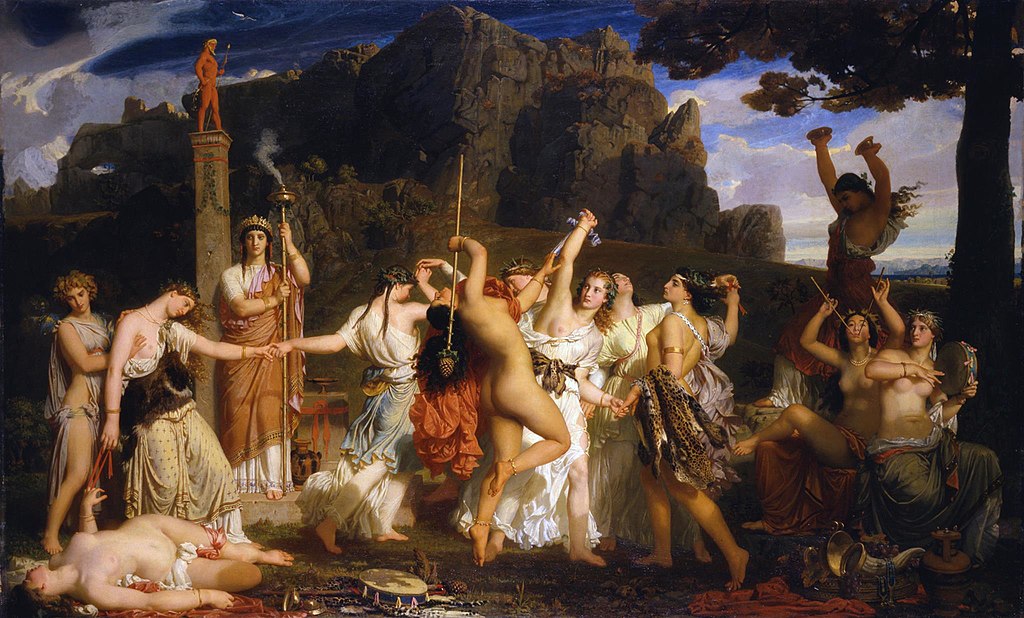fransk: La Danse des bacchantes
The Dance of the Bacchantes
fransk:
La Danse des bacchantes
The Dance of the Bacchantes
Forfatter/Opretter:
Shortlink:
kilde:
størrelse:
2048 x 1236 Pixel (305456 Bytes)
beskrivelse:
The Dance of the Bacchantes, the last painting by Gleyre exhibited publicly in Paris (at the Salon of 1849), came as a surprise to enthusiasts of bacchanals, which had been a traditional subject since the days of Titian and Poussin. Bacchus, Silenus and the satyrs are all absent, and the painting is therefore neither mythological nor fabulous, but rather historical and religious. Gleyre paints a mysterious, wild and exclusively female ritual, captured in very precise draughtsmanship and a smooth technique producing what one critic calls the strange effect of a “choreography, which is both noble and unbridled, frenzied and rhythmic”.
Following in the footsteps of A l'instar de Pentheus, The Dance reveals a new, popularised reading of the roots of ancient Greek civilisation and its forms of worship in the 1830s. Contrary to the solar, masculine and Apollonian vision which had been extolled by Winckelmann since the mid-18th century, Gleyre depicts the primitive, eastern and Dionysian Greece, posited in the works of the philologist and historian Friedrich Creuzer.
Subjects drawn from Antiquity provided the painter with the opportunity for a personal and unusual meditation on the origins of the arts, omitting any reference to either Apollo or Orpheus. In The Dance invented by the Bacchantes, the music played to animals in Minerva, the art of spinning taught to an absurd Hercules by the beautiful Omphale, and the love poetry composed by Sappho - the secret of the arts seems to be the preserve of women, acquired through a mysterious and intuitive affinity with the divine powers of creation.
Following in the footsteps of A l'instar de Pentheus, The Dance reveals a new, popularised reading of the roots of ancient Greek civilisation and its forms of worship in the 1830s. Contrary to the solar, masculine and Apollonian vision which had been extolled by Winckelmann since the mid-18th century, Gleyre depicts the primitive, eastern and Dionysian Greece, posited in the works of the philologist and historian Friedrich Creuzer.
Subjects drawn from Antiquity provided the painter with the opportunity for a personal and unusual meditation on the origins of the arts, omitting any reference to either Apollo or Orpheus. In The Dance invented by the Bacchantes, the music played to animals in Minerva, the art of spinning taught to an absurd Hercules by the beautiful Omphale, and the love poetry composed by Sappho - the secret of the arts seems to be the preserve of women, acquired through a mysterious and intuitive affinity with the divine powers of creation.
Licens:
Public domain
Yderligere oplysninger om licens til billedet kan findes her. Sidste ændring: Tue, 09 Jul 2024 19:39:49 GMT
